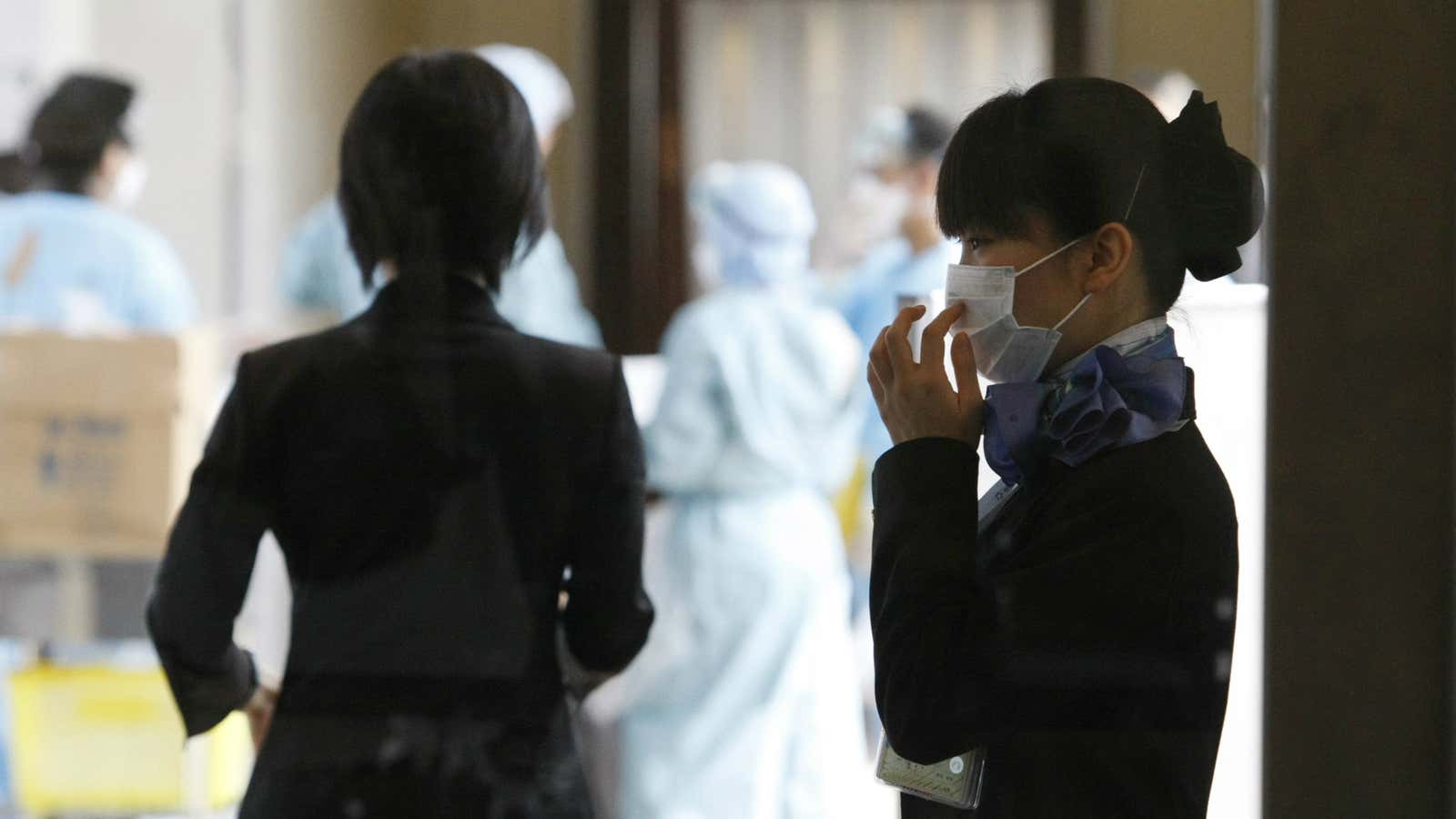In case you missed it, this year’s flu season is a doozy. According to the CDC’s director, the conditions are “extremely challenging and intense” and US officials estimated in December that as many as 646,000 people will die globally from the condition over the course of the year.
While it may be an effective deterrent, barricading yourself indoors until winter fades is not an option. But if you embark on air travel before flu season is over, you are essentially walking into a enclosed space where you’re at the mercy of other people’s germs, subpar cleaning, and the overall toll that flying takes on your body—all of which up your chances of contracting the flu or a bad cold.
So what can be done? And if you do get sick on board, whose fault is it? Is it the guy in seat 32A for repeatedly coughing infectious respiratory droplets into the ether; the airline, some of whom only allot 10 to 15 minutes of cleaning time between flights; or you, for staying up until 3am doing karaoke on Wednesday when you could have been getting a good night’s sleep before your important business trip.
According to Dr. Eric Milefchik, Chairman of Infection Prevention at Torrance Memorial Medical Center in southern California, the real culprit is a bit of all three.
“Airplane circulation is actually pretty good—that’s not the weakness of air travel,” Dr. Milefchik said in an interview. “But the density of people in a closed space is a notorious environment for respiratory viruses to spread. If you have someone in that respiratory droplet range of three to six feet [one to two meters], and they’re coughing, that’s very hard to control. Airplanes also aren’t cleaned very well, and those surfaces accumulate over the course of the day.”
Ick. It’s easy to feel like the answer to this state of affairs is to embark on an aggressive personal airplane cleaning campaign, armed with wet wipes and hand sanitizer—and if possible, a hazmat suit. But Dr. Milefchik says those lines of defense only go so far.
“Sanitizing wipes probably do help in terms of reducing any gross contamination of your area. But it terms of the fabric of your seat, it would be very difficult to properly sanitize your little micro environment, and of course it’s the degree you’re willing to go to if you want to carry all this equipment with you.”
So is it all just the luck of the draw? Not quite. There are several things you can do to lower you chances of getting sick from an airplane, with the most important of those steps, Dr. Milefchik says, happening long before you travel.
- Get a flu shot. No, really get a flu shot—even if you haven’t yet. “There are so few downsides to getting the flu shot, and only upsides,” Dr. Milefchik says. While the ideal time to get one is December, there will still be a benefit of getting one up until about mid-March, after which there is not much point.
- Your immune system matters. “If you were exposed to a virus during air travel, your chances of getting sick will depend a lot on what your level of rest and ability to fight that virus are,” Dr. Milefchik says. So, make sure you get plenty of rest, lots of sleep, and eat healthy meals in advance of travel—and don’t think you can mask bad habits by taking supplements. In other words: Regularly eating leafy greens is better than downing vitamin C tablets for 48 hours before takeoff.
- Wash and sanitize your hands obsessively. One of the only things you have total control over when you travel is what you touch, says Dr. Milefchik, so be diligent about washing your hands and even disinfecting them again with an alcohol-based hand sanitizer when you return to your seat (especially after you’ve touched that bathroom door handle) and throughout the flight.
- Leave your face alone. Also crucial, Dr. Milefchik says, is not touching your face, which is a great way to transmit germs into your system but is “a surprisingly hard thing to train yourself to do.” (One study found the average rate of 15.7 hand-to-face contacts per hour). While face masks, which are common in Asia, can be helpful in preventing exposure to respiratory droplets, the one downside is they often cause people to touch their face more through frequent adjustments.
- If someone sick is in the respiratory range, ask to move. If your seat mate is coughing and sputtering, it will be very hard to avoid being exposed to their germs, which can travel up to six feet. While it’s not always possible to move seats, it is worth asking to reduce your exposure to their range. (Or, if you want to be very direct, provide them with a face mask and ask them to wear it).
- Get out those wet wipes. Though it’s by no means a foolproof line of defense, it is worth traveling with some disinfectant wipes to wipe down the tray table, screen, arm rest, and other hard surfaces surrounding your seat.
